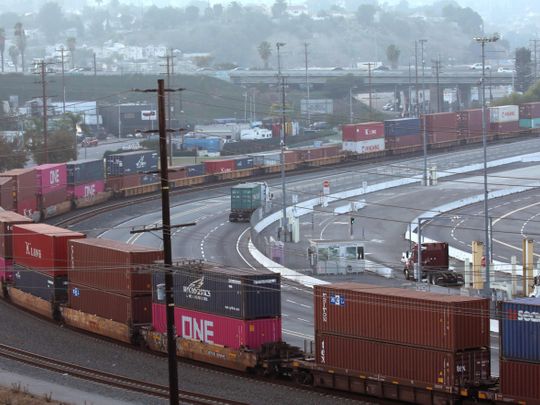
WASHINGTON: China has agreed to buy $200 billion worth of additional US goods and services over the next two years as part of a phase one trade pact to be signed in early January, US. Trade Representative Robert Lighthizer told reporters on Friday.
As part of the agreement, Beijing committed to buy an additional $32 billion American agricultural products over two years, or roughly $16 billion a year more than the 2017 baseline of $24 billion, Lighthizer told reporters. He said Beijing would aim for another $5 billion in farm purchases each year on top of that.
US. President Donald Trump promised $40 billion to $50 billion in expanded Chinese agriculture purchases when he first announced the phase one agreement on October 11.
Lighthizer said the pact was “a very, very important step forward” in rebalancing US-China trade relations and included a raft of structural changes, in addition to firm commitments to increase Beijing’s purchases of US goods and services in manufacturing, energy, agriculture and services.
The agreement, hammered out in detailed negotiations between the two sides over the past two months, eases tensions after 17 months of tit-for-tat tariffs that have roiled financial markets and dragged global growth lower.
Lighthizer said broad targets for Chinese purchases in the four areas would be released publicly. There would also be specific targets for purchases of specific products, but those would not be made public to avoid distorting markets.
He insisted the trade agreement was compliant with World Trade Organisation rules, adding that China would be free to buy things when “it’s the perfect time in the market to buy things.” Asked about what happened between October 11 and now, Lighthizer said that time was spent on getting to specifics on the language of the agreement. Those discussions continued until Friday morning, he said, noting that he got the final go-ahead from the president just after 10am.
Lighthizer, who completed work on a US-Mexico-Canada trade agreement earlier this week, said he was battling laryngitis and was looking forward to “going home” for Christmas after the non-stop negotiations of recent months.
The agreement will reduce US tariffs on some Chinese goods, and indefinitely puts off further 15% tariffs on some $160 billion in consumer goods that were due to go into effect on Sunday, Lighthizer said. The lower tariff rates will go into effect 30 days after the deal is signed in January.
He said he did not expect the United States to impose any additional tariffs against China, outside of potential changes resulting from an enforcement mechanism agreed by both sides.
The deal included structural changes by China — including commitments on ending pressure for US companies who do business in China to transfer their technology, and improved protections for intellectual property, he said.
It would also address long-standing concerns about trade secret, patent, and trademark protections, as well as pirated and counterfeit goods.
Lighthizer conceded there far more work to do, however.
Discussions about a next phase agreement would begin at an “appropriate” time and Trump did not want to put them off until after the 2020 presidential election, he said.
Lighthizer said the deal also included enforceable currency provisions to increase transparency, and a commitment by China not to devalue its currency to boost competitiveness. He declined to say if the United States would remove its designation of China as a currency manipulator.
That could be contained in a delayed currency report from the US. Treasury.
A senior administration official said the currency changes were vital. “We think that that’s going to really help to reinforce macroeconomic exchange rate stability and ensure that China cannot use its currency practices to unfairly compete against US exports,” the official said.












